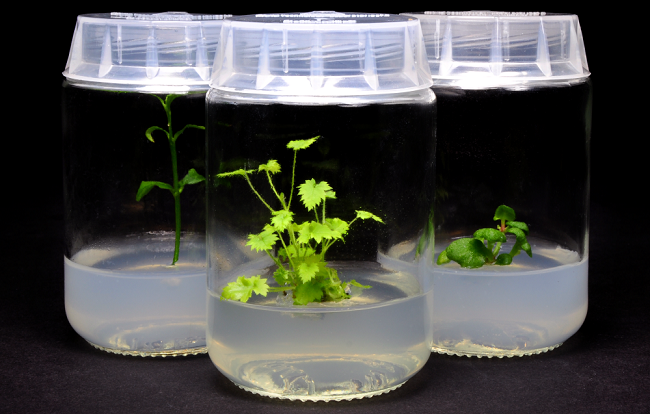
Are you losing a battle to save a favorite plant from bugs or disease? Have you ever had a plant that was so amazing you wished you had fifty exact copies? Do you wish your plants reproduced faster? Plant tissue culture can make all these dreams come true and more.
Using tissue culture propagation, we can grow a plant to maturity much faster than traditional propagation methods and the process uses very little space. You can fill an entire yard with the plants generated from a small shelf. The cleansing process of tissue culture ensures that plants are pest and disease-free making plants raised via culture a sought-after item in nurseries and other commercial operations. Simply stated, plant tissue culture allows you to rapidly reproduce plant cells creating many “plantlets” that are identical to a single parent plant. Tissue culture is an extremely efficient propagation method requiring very little light and very little in the way of resources.
The simplest way to get started with tissue culture is to buy a kit online. One of the major advantages to this is that they will generally include a manual as well as access to the customer service department of the company you purchase from. While tissue culture is not rocket science, some plants are more difficult to propagate than others. Things like the type and concentration of hormones to use will vary depending on the plant and the source of the plant material. A good supplier should be able to help you with some of these intricacies of tissue culture. Online kits range in price anywhere from under $100 for a basic starter kit to complete kits for a few hundred dollars. If you prefer to buy locally- basic supplies that you will want on hand include bleach and alcohol, a pressure cooker and microwave (to sterilize equipment), four- or six-ounce jars and lids (baby food jars work well), media, nutrients, agar, sugar, hormones, PPM, forceps, scalpel, measurement device for ml, pH strips, and pH correction solutions.
Once you get the hang of things the most difficult part of tissue culture is ensuring that everything is sterile including utensils, work area, and the plant material. This is usually done with basic bleach or alcohol, but it is important that the area remains clean throughout the process. If you have access to an air filter, you will want to use it. All it takes is one spore to completely overwhelm the plant cells that you want to reproduce.
Once everything is sterile, take a piece of the plant (meristem, stem tip, node, or a seed) and then place it in a sterilized media. The solid media is usually made by adding purified agar to the liquid media. As shoots emerge, they can be sliced off and rooted in auxin to create many plantlets from a single culture. Take the finished plantlets and plant them in soil or plugs and there you have it- tissue culture propagation for gardening efficiently.
Angela Lundmark is a freelance writer that enjoys outdoor and indoor gardening.
Related Articles & Free Email Newsletter
Curious About CBD? Here’s What it Can and Cannot Do for You
How to Germinate Seeds Indoors & Take Care of Seedlings




Comment here